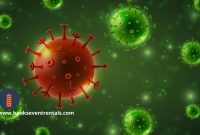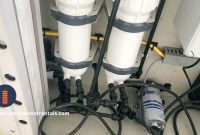7 Critical Stages of Wastewater Processing for Clean Water Solutions
Water is essential for life, but clean water is becoming scarcer due to pollution, industrial waste, and urbanization. Wastewater treatment plays a critical role in recycling water, making it safe for human use and the environment. The process of transforming wastewater into clean water is complex, involving multiple stages of purification.
In this article, we will dive deep into the 7 critical stages of wastewater processing, explaining each step in an easily understandable way. Our aim is to show you how wastewater is transformed into clean water through modern water treatment systems.
1. Preliminary Treatment: Removing Large Debris
The first stage in wastewater treatment is preliminary treatment, where large objects are removed from the wastewater. These objects can include sticks, leaves, plastic items, and other debris that can clog or damage the treatment equipment.
- Screening: Water passes through screens to filter out large objects.
- Grit Removal: Heavy materials like sand and gravel are separated from the water in grit chambers.
This step ensures that large particles do not interfere with the more delicate processes that follow.
2. Primary Treatment: Settling Out Solid Waste
In the primary treatment stage, wastewater moves into large settling tanks. Here, the goal is to separate solid materials from the water.
- Sedimentation: Gravity causes heavier particles, like sludge, to sink to the bottom.
- Skimming: Lighter substances, such as oils and grease, float to the surface and are skimmed off.
By the end of this stage, about 50-70% of suspended solids have been removed, preparing the water for biological treatment.
3. Secondary Treatment: Biological Breakdown of Organic Matter
Secondary treatment is where the majority of organic matter in the water is broken down by bacteria and other microorganisms. These microorganisms consume the waste, converting it into less harmful substances.
There are several methods used during this stage:
- Activated Sludge Process: Oxygen is pumped into the water to encourage bacteria to grow and consume organic waste.
- Trickling Filters: Water is trickled over a bed of stones or plastic, which serves as a surface for microorganisms to thrive and break down waste.
- Lagoons: Large, open-air ponds where bacteria naturally break down the waste over time.
This step is crucial for removing dissolved and suspended organic pollutants from the water.
4. Tertiary Treatment: Advanced Filtration and Chemical Treatment
Tertiary treatment is an advanced stage of water purification that aims to further improve water quality after secondary treatment. This stage targets smaller pollutants and nutrients that can harm the environment if discharged.
- Filtration: Water is filtered through sand, gravel, or activated carbon to remove remaining particles.
- Nutrient Removal: Nitrogen and phosphorus, common in agricultural and industrial runoff, are reduced through chemical processes.
- Disinfection: Chlorine, ozone, or ultraviolet light is used to kill harmful bacteria and viruses.
This step ensures that the treated water meets environmental safety standards before it is either discharged into natural bodies of water or reused.
5. Sludge Treatment: Handling and Recycling Solids
Wastewater treatment generates solid waste known as sludge, which needs to be properly treated and disposed of. The treatment of sludge is a separate process from water purification but is essential for reducing the environmental impact of the treatment plant.
- Thickening: Sludge is concentrated to reduce its volume.
- Digestion: Anaerobic bacteria break down the organic materials in the sludge, reducing its volume and producing biogas as a byproduct.
- Dewatering: The remaining sludge is dried to further reduce its volume before disposal or use as fertilizer.
Proper sludge treatment not only helps manage waste but also provides potential energy sources through biogas production.
6. Reuse and Discharge: Releasing Clean Water
After all the treatment stages, the water is now clean and ready for discharge or reuse. There are several potential uses for treated water:
- Discharge into Rivers and Oceans: Clean water can be safely returned to natural water bodies without harming the environment.
- Irrigation: Treated wastewater can be reused for agricultural purposes.
- Industrial Reuse: Industries can reuse treated water for cooling and other non-potable processes.
In some advanced systems, treated water can even be further purified to drinking water standards, although this requires additional processes such as reverse osmosis.
7. Monitoring and Compliance: Ensuring Safety and Sustainability
The final stage in wastewater treatment is monitoring. This stage ensures that all treatment processes meet the required environmental regulations and standards. Continuous testing and monitoring are essential to ensure that treated water is safe for its intended use.
- Testing Water Quality: Samples are taken and analyzed to ensure that the water meets safety standards for contaminants, pathogens, and chemicals.
- Compliance with Regulations: Treatment plants must comply with local, national, and international regulations to ensure the safety of the environment and public health.
This stage ensures that the treatment facility operates efficiently and sustainably, minimizing its environmental impact.
Why Wastewater Treatment is Essential
Wastewater treatment is not just about turning dirty water into clean water. It’s about protecting the environment, conserving water resources, and supporting human health. Clean water is vital for drinking, agriculture, industry, and maintaining ecosystems.
Without proper wastewater treatment, communities would be exposed to harmful bacteria, viruses, and chemicals that could lead to disease outbreaks and environmental disasters.
Key Benefits of Wastewater Treatment:
- Public Health Protection: Treating wastewater prevents the spread of waterborne diseases.
- Environmental Protection: Proper treatment reduces the pollution of rivers, lakes, and oceans.
- Water Conservation: Treated water can be reused, reducing the demand for fresh water sources.
- Energy Production: Sludge treatment can generate biogas, which can be used as a renewable energy source.
Challenges in Wastewater Treatment
While wastewater treatment is crucial, it also faces several challenges:
- High Energy Use: Some processes, especially secondary and tertiary treatments, require a lot of energy.
- Chemical Use: Disinfection methods like chlorine can have negative environmental effects if not properly managed.
- Infrastructure Costs: Building and maintaining treatment plants requires significant investment.
- Rising Pollution Levels: As industries and populations grow, more wastewater needs to be treated, increasing the strain on existing systems.
Innovative technologies, such as membrane bioreactors and energy-efficient systems, are being developed to address these challenges and make wastewater treatment more sustainable.
Frequently Asked Questions (FAQs)
1. What is wastewater treatment?
Wastewater treatment is the process of removing contaminants from water used in homes, businesses, and industries to make it safe for reuse or discharge into the environment.
2. Why is wastewater treatment important?
It protects public health by removing harmful bacteria and chemicals from water and prevents pollution in natural water bodies like rivers, lakes, and oceans.
3. Can treated wastewater be reused?
Yes, treated wastewater can be reused for non-potable purposes like agriculture, industrial processes, or even further purified to become drinking water.
4. How long does the wastewater treatment process take?
The time required depends on the size of the facility and the technology used but typically ranges from a few hours to a few days.
5. What happens to the solid waste from wastewater?
The solid waste, or sludge, is treated separately through processes like digestion and dewatering. It can be disposed of or recycled as fertilizer.
6. Is wastewater treatment expensive?
While it can be costly to build and operate treatment plants, the benefits to public health and the environment make it a necessary investment.
Conclusion
Wastewater treatment is essential for protecting the environment, safeguarding human health, and conserving water. Through seven critical stages, contaminated water is transformed into clean, reusable water. While the process is complex, it is necessary for the long-term sustainability of our water resources.
As populations grow and industries expand, effective water treatment solutions become more critical than ever. Governments, industries, and communities must invest in modern wastewater treatment systems to ensure a steady supply of clean water for future generations.



